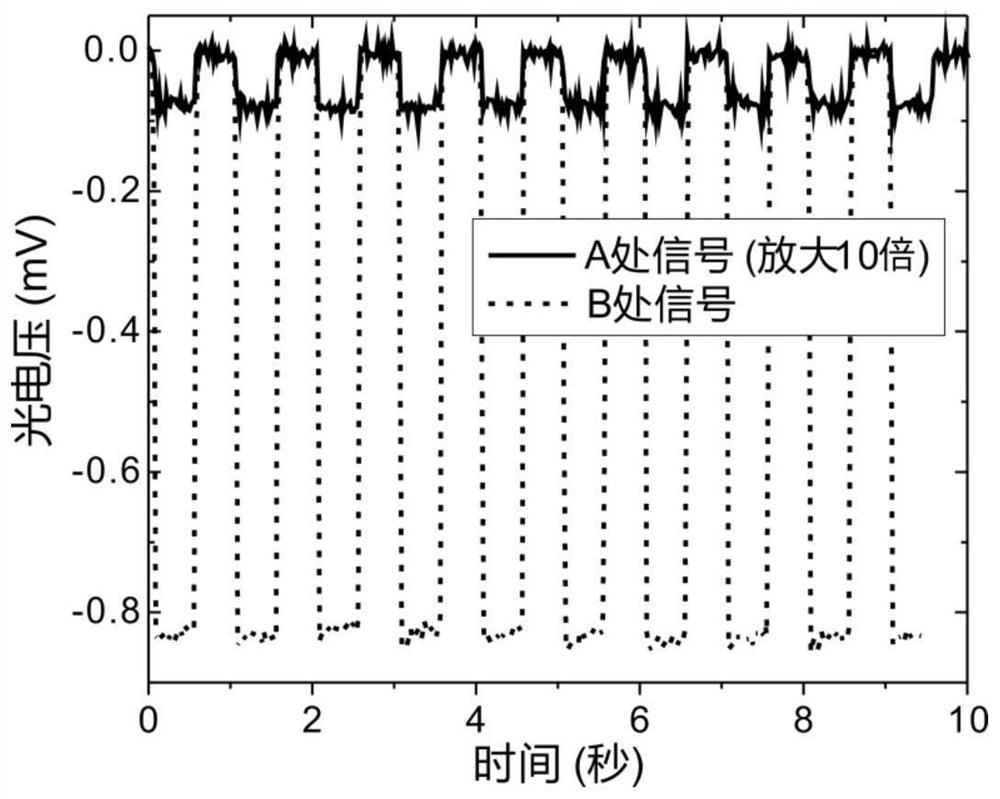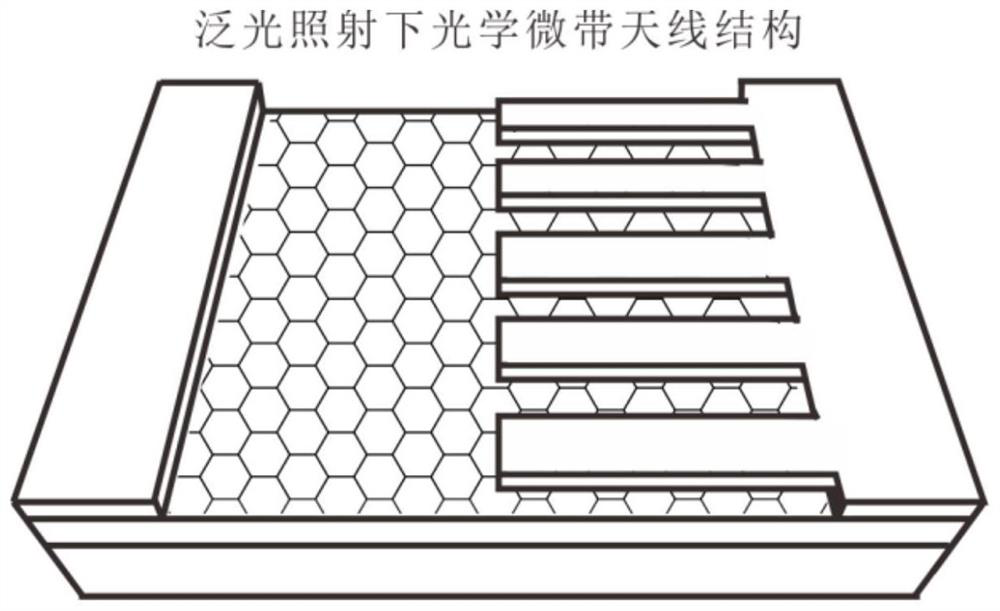Two-dimensional material detector based on asymmetric integration of optical microstrip antenna
A microstrip antenna, two-dimensional material technology, applied in the directions of antennas, resonant antennas, antenna components, etc., can solve the problems of low light absorption rate, complex conditions, and no absorption, and achieve strong process compatibility and simple process flow. , the effect of reducing costs
- Summary
- Abstract
- Description
- Claims
- Application Information
AI Technical Summary
Problems solved by technology
Method used
Image
Examples
Embodiment example
[0027] The asymmetrically integrated graphene detector of the optical microstrip antenna in this embodiment is aimed at a wavelength of 1.65 μm, and the metal is chromium / gold. The structural size of the periodic unit optimized by design is: P=590nm, W=283nm, L 1 =5μm,L 2 =10μm,h 1 =110nm,h 2 =30nm,h 3 = 45nm. Among them, the metal reflective layer 1 adopts Cr(20nm) / Au(90nm), the dielectric spacer layer 2 adopts Al2O3 which is transparent to the working band with a designed thickness as the dielectric layer, and the two-dimensional active material 3 is a copper-based material transferred by wet method. CVD-grown single-layer graphene, the source electrode 4 and the drain electrode 5 integrated with metal grid bars use Cr (5nm) / Au (45nm). As a control experiment, the general coupled grating asymmetrically integrated graphene device has the same top layer grating periodic structure size as the optical microstrip antenna asymmetrically integrated graphene detector, but its b...
PUM
 Login to View More
Login to View More Abstract
Description
Claims
Application Information
 Login to View More
Login to View More - R&D
- Intellectual Property
- Life Sciences
- Materials
- Tech Scout
- Unparalleled Data Quality
- Higher Quality Content
- 60% Fewer Hallucinations
Browse by: Latest US Patents, China's latest patents, Technical Efficacy Thesaurus, Application Domain, Technology Topic, Popular Technical Reports.
© 2025 PatSnap. All rights reserved.Legal|Privacy policy|Modern Slavery Act Transparency Statement|Sitemap|About US| Contact US: help@patsnap.com



